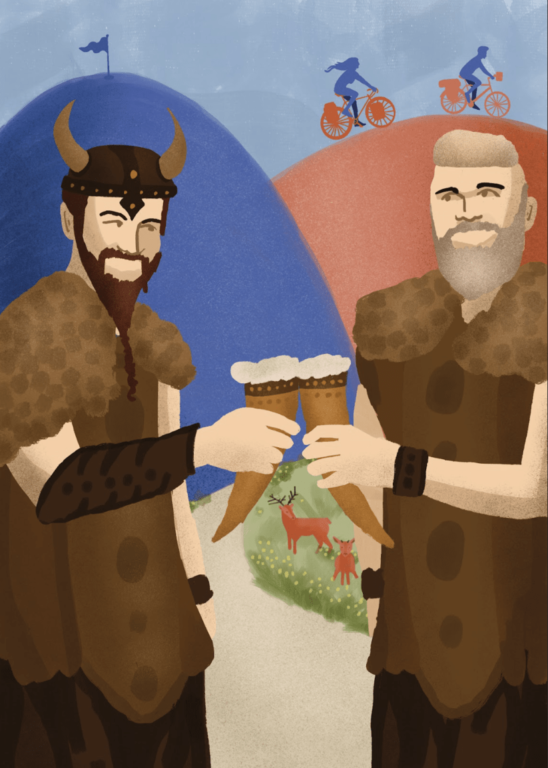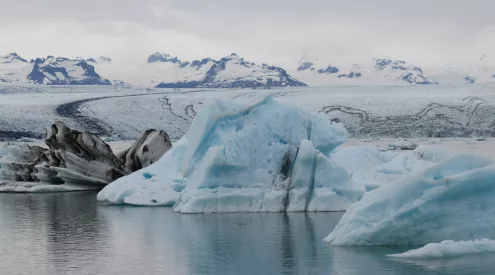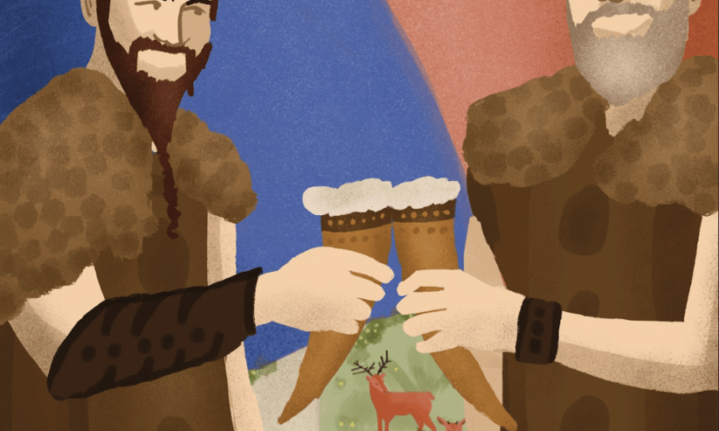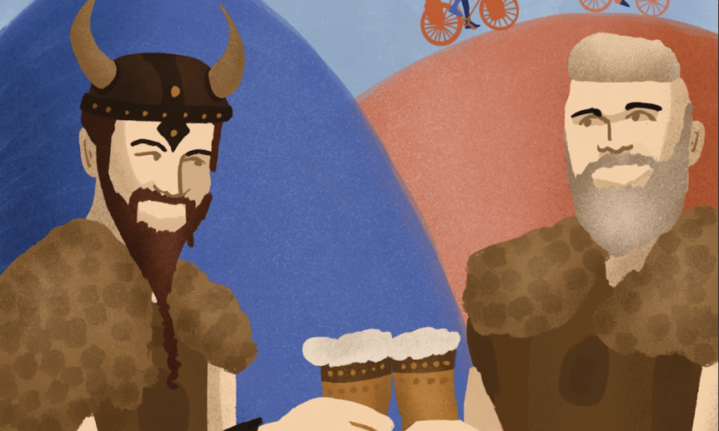Whisky, literature and bust-shaped mountains… Matthew Holt braves crazy weather and a maddening golf course in Scotland’s Inner Hebrides
The ferry to Jura boasted the proud lines and facilities of a pontoon barge, and Fiona and I sheltered from the tempest in what resembled a bus shelter. Fortunately, there were no other passengers and the crossing took 10 minutes. Disembarking at Feolin, we were spared excess fanfare or formalities. The skipper gesticulated for us to push our bicycles down the gangplank and up the concrete slipway. With only one road to choose from – a single-track lane, grandly designated the A846 – we wobbled into the head-on gale, our cycles heavily weighted with panniers, which stopped them blowing away, but limited forward momentum.
We were touring the Scottish Isles by bicycle; a capital idea, when planned somewhere warm and afar. Primarily comprising bleak mountains and vile bog, Jura was once fiercely contested by berserk Vikings and Scottish clans. Less surprisingly, there are now only 196 permanent inhabitants, known as Diurachs.
It was some 14km from Feolin to the main settlement and, on the way, we called in at Ardfin, a private estate hosting one of the world’s most dastardly golf courses – on which nobody has yet to tee off and finish with the same ball. A round costs more than £2 000 (that’s more than R39 000), excluding lost balls, though in the scheme of things here that’s a bargain. We popped into a stone boathouse by the 11th green, which now offers sustenance to dejected golfers but once served as the studio for an extravagant piece of performance art by Rockman Rock (aka Jimmy Cauty) and King Boy D (aka Bill Drummond).
As The KLF, Cauty (from northern England) and Drummond (born in Butterworth, South Africa) were one of the world’s most successful bands in 1991. Awarded Best British Group at the 1992 BRIT awards, they promptly announced their disbandment and brought a freshly slaughtered sheep to the afterparty. (Cauty dissuaded Drummond from severing one of his hands and throwing it into the crowd).
Starting afresh as an arts foundation, they travelled to Jura in August 1994 and burned £1 million – the bulk of their remaining earnings – taking over an hour to incinerate £50 notes in the Ardfin boathouse.
Having filmed the event and turned the ashes into a brick, they went on tour, to be widely ridiculed and abused. Drummond subsequently admitted that he struggled explaining this artwork to his children.
Craighouse, the capital of Jura and only settlement of note, is snuggled in the southern crook of the Bay of Small Isles. The main architectural landmark is the distillery; the neighbouring Jura Hotel housed the island’s only pub; and a caber’s toss away was the sole shop, from whose eclectic stock we purchased a route map for the annual fell run. Grazing on the distillery’s lawn were a family of red deer, which outnumber Diurachs 30-to-one.
While most visitors come to Jura for whisky, fishing or stag hunting, our objective was to climb the Paps, a trio of pert, conical peaks that allegedly reminded lusty Vikings of maidens’ breasts. More than 700m high, they’re now lumbered with unpronounceable, unspellable Gaelic names, which translate as Holy Mountain, Mountain of Gold and Mountain of the Kyle.

Illustration by Brent Manikam
Early the next morning, we rose with intent, to be confronted with rain-lashed windows. Re-rising somewhat later, we resolved at least to cycle up the island. As we aquaplaned along the shore, sheeny black seals bobbed in the surf, though they might have been rocks. With the rain somehow strengthening, we pulled in at the hamlet of Knockrome, taking turns to huddle in the public library, a converted red phone booth stuffed with books.
We’d set off aiming to reach Barnhill, a farmhouse 40km north of Craighouse, where Eric Blair wrote his bestselling, dystopian novel initially titled The Last Man in Europe. And, rather ambitiously, we also thought we might hike along the cliffs to see the notorious, boat-eating Corryvreckan whirlpool.
Blair stayed at Barnhill intermittently between 1946 and 1949, after his London home had been flattened by a Nazi doodlebug and his wife had died during a routine hospital operation. Despite a severe respiratory illness, which wasn’t helped by smoking 30 unfiltered cigarettes a day, and almost drowning in Corryvreckan when his motorboat flipped, he completed his novel – which was published in October 1949 as Nineteen Eighty-Four, under his pen name, George Orwell.
Three months later, aged 46, he died of TB. Available for holiday rentals and much as he left it, Barnhill is now a pilgrimage site for Orwell fans. But sodden and chilled, our interest wilted and we turned tail. Besides, most of Orwell’s lead characters are failures.
The following day we were confronted with the customary deluge, though by mid-morning the weather had sufficiently relented that we felt obliged to venture out. Stowing our bikes under Three Arch Bridge, we triple-jumped along a submerged trail, which our newly purchased map described as ‘awful trods across desperate bogs’.
During a torrid afternoon, we battled up the highest pap, by which time we couldn’t see more than five metres; crawled up the second highest, by which time the wind was so fierce we couldn’t stand up; and gave the third one a miss. Squelching back towards our bikes, a family of red deer glided ethereally past.
Later, we celebrated with a rather pricey, antique single malt, though compared to some Jura visits, ours had been cheap. We were watched – not by Big Brother – but by a handsome stag, which stared out glassy-eyed from his mounting on the wall.
A version of this article originally appeared in the September 2022 print issue of Getaway
Words by Matthew Holt
Illustration by Brent Manikam



















